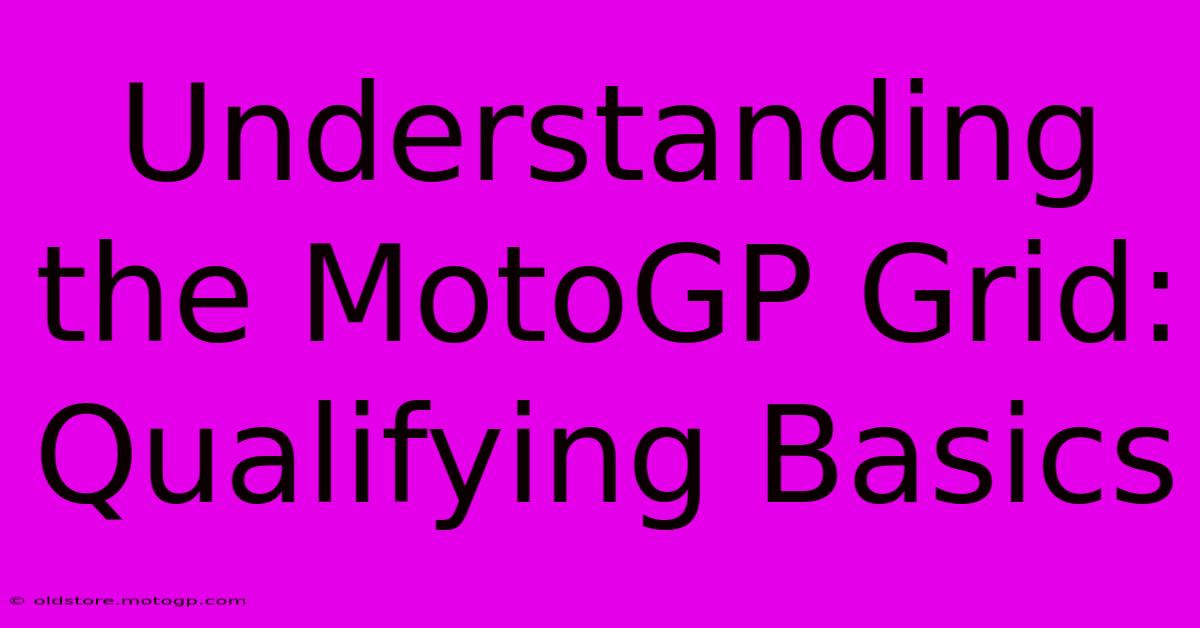Understanding The MotoGP Grid: Qualifying Basics

Table of Contents
Understanding the MotoGP Grid: Qualifying Basics
MotoGP, the pinnacle of motorcycle racing, boasts incredible speed, skill, and breathtaking overtakes. But before the lights go out and the race begins, there's a crucial stage that determines starting positions: qualifying. Understanding the MotoGP qualifying format is key to appreciating the race itself. This guide breaks down the basics, explaining how riders earn their grid slots and what strategies are employed.
The Qualifying Format: A Step-by-Step Guide
The MotoGP qualifying process is a multi-stage affair designed to separate the fastest riders from the rest of the pack. It's a high-pressure environment where even hundredths of a second can make a huge difference.
Q1: The First Cut
The qualifying process begins with Q1 (Qualifying 1). This session involves the slower riders, typically those who didn't finish within the top 10 in the combined times of the free practice sessions (FP1, FP2, FP3). These riders have a limited time – typically 15 minutes – to set the fastest possible lap. Only the two fastest riders from Q1 progress to Q2. The remaining riders are locked into their starting positions based on their Q1 times.
Q2: The Fight for Pole Position
Q2 (Qualifying 2) brings together the top 10 riders from the combined free practice sessions and the two fastest riders from Q1. This is where the battle for pole position intensifies. These riders have another 15 minutes to fight for the best grid slots. The rider with the fastest lap time earns pole position, the coveted starting spot at the front of the grid.
The Importance of Free Practice (FP)
Before qualifying even begins, free practice sessions (FP1, FP2, and FP3) are vital. These sessions allow riders to test different settings on their bikes, familiarize themselves with the track, and fine-tune their race strategies. Performance in free practice significantly influences which riders progress directly to Q2.
Strategies and Tactics in MotoGP Qualifying
Qualifying isn't just about raw speed; it's also about strategy and tactics. Teams and riders employ various methods to maximize their chances of securing a favorable grid position:
-
Tire Management: Choosing the right tires and managing their wear throughout the qualifying sessions is crucial. A new set of tires can provide a significant speed advantage, but managing tire degradation over multiple laps is essential.
-
Slipstreaming: Riders often utilize slipstreaming to gain an aerodynamic advantage. Drafting behind another rider reduces air resistance, allowing for a faster lap time. This is a common tactic, especially in Q2.
-
Track Conditions: Qualifying sessions are heavily affected by track conditions. Temperature, humidity, and the presence of debris all play a role in lap times. Teams meticulously analyze these factors to optimize their strategies.
-
Track Evolution: The track often evolves throughout the weekend as rubber is laid down. The later qualifying sessions often see faster times due to improved grip.
The Impact of Starting Position
A good starting position in MotoGP is absolutely critical. Starting at the front of the grid gives riders a significant advantage at the start of the race, allowing them to control the pace and avoid traffic. Conversely, a poor starting position can make it much harder to achieve a good result, forcing riders to fight their way through the pack.
Conclusion
Understanding the nuances of MotoGP qualifying is key to appreciating the intensity and strategy involved in this thrilling motorsport. From the initial Q1 cut to the nail-biting fight for pole in Q2, every second counts. The combined skills of rider, bike, and team, along with effective strategic decisions, determine who secures the prime grid positions and ultimately influences the outcome of the race itself. So next time you watch a MotoGP race, remember the crucial role played by qualifying in shaping the unfolding drama.

Thank you for visiting our website wich cover about Understanding The MotoGP Grid: Qualifying Basics. We hope the information provided has been useful to you. Feel free to contact us if you have any questions or need further assistance. See you next time and dont miss to bookmark.
Featured Posts
-
Cota Parking Austins Best Parking Resource
Feb 25, 2025
-
Moto2 Bikes The Essence Of Speed
Feb 25, 2025
-
High Octane Thrills Must See Moto Gp Pictures
Feb 25, 2025
-
The Future Is Fast Bike Racing On Tvs Next Chapter
Feb 25, 2025
-
Moto2 Bike Specs The Key To Racing Success
Feb 25, 2025
